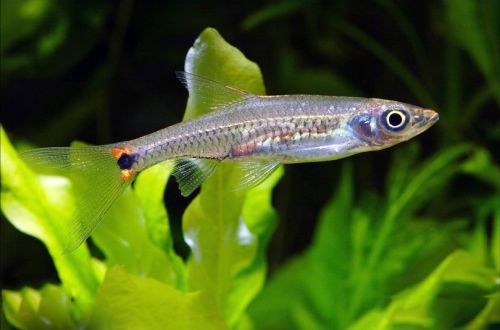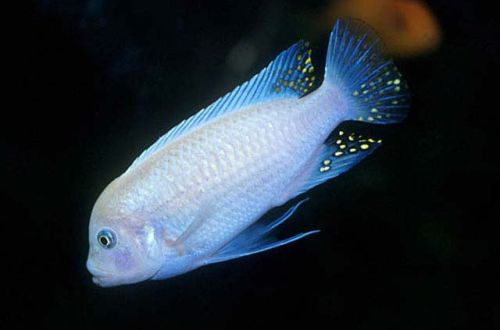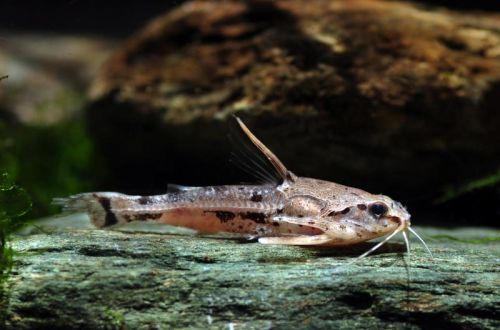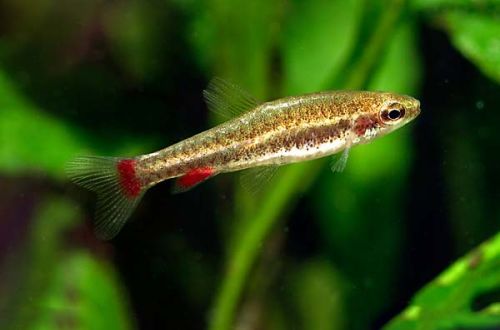
Cottellata Britannia
Kottelata Brittani, scientific name Kottelatia brittani, belongs to the Cyprinidae family. The fish got its name in honor of the Swiss ichthyologist Maurice Cottelat and Martin Brittan, the author of the monograph on Rasbors, in which this species was described. Considered easy to keep and breed, it can be recommended for beginner aquarists.

Contents
Habitat
It originates from Southeast Asia, presumably from the Malay Peninsula and the island of Sumatra, there is no reliable information about the natural habitat, since wholesale deliveries come from Singapore and the species was described precisely from these samples. Probably inhabits small forest streams and tributaries with clear water.
Brief information:
- The volume of the aquarium – from 70 liters.
- Temperature – 20-26°C
- Value pH — 6.0–7.5
- Water hardness – soft (1-8 dGH)
- Substrate type – any
- Lighting – any
- Brackish water – no
- Water movement – light or moderate
- The size of the fish is 5–6 cm.
- Food – any food
- Temperament – peaceful
- Keeping in a group of 8-10 individuals
Description
Adult individuals reach a length of up to 5–6 cm. Sexual dimorphism is weakly expressed, the differences lie only in size – females are somewhat larger than males. The coloration is gray with a silvery belly. Fins are translucent. A characteristic feature of the species is the red-black pigmentation at the base of the tail.
Food
Accepts most popular aquarium fish foods. It is recommended to combine several types of products, for example, dry flakes and granules with live or frozen bloodworms, brine shrimp.
Maintenance and care, arrangement of the aquarium
The optimal size of the aquarium for a small flock of fish starts from 60-70 liters. Decoration is not critical when keeping Cottelata Britani, but it has been noted that in aquariums with rich vegetation, dark soil and subdued lighting, the color becomes more saturated. Although the heyday of this fish is not distinguished by an abundance of colors.
Much more attention should be paid to water quality, which is affected not only by its weekly partial change, but also by a productive filtration system and regular cleaning of the aquarium from organic waste. The aquarium should be equipped with a lid to avoid accidental jumping out of the fish.
Behavior and Compatibility
A peaceful, agile schooling fish, considered a good addition to a community of other non-aggressive species of comparable size. It is advisable to keep at least 8-10 individuals or more in a group.
Breeding / breeding
In favorable conditions, the fish will regularly give offspring. However, the survival of fry in a community tank will be minimal, since this species does not show parental care and, moreover, can eat its own eggs.
If you plan to keep the entire brood, it is recommended to prepare a separate spawning aquarium. Usually it has a small size – about 20-40 liters. Of the equipment, a simple airlift filter with a sponge, a heater and a low-power lamp are sufficient. Artificial plants or shade-loving mosses and ferns are used as decor.
At the end of spawning, the eggs are carefully transferred to a prepared spawning aquarium with identical water conditions. The fry appear during the day, after a couple of days they begin to swim freely in search of food. Feed specialized microfoods and/or brine shrimp nauplii.
Fish diseases
Hardy and unpretentious fish. If kept in suitable conditions, then health problems do not arise. Diseases occur in case of injury, contact with already sick fish or significant deterioration of the habitat (dirty aquarium, poor food, etc.). Read more about symptoms and treatments in the Aquarium Fish Diseases section.





